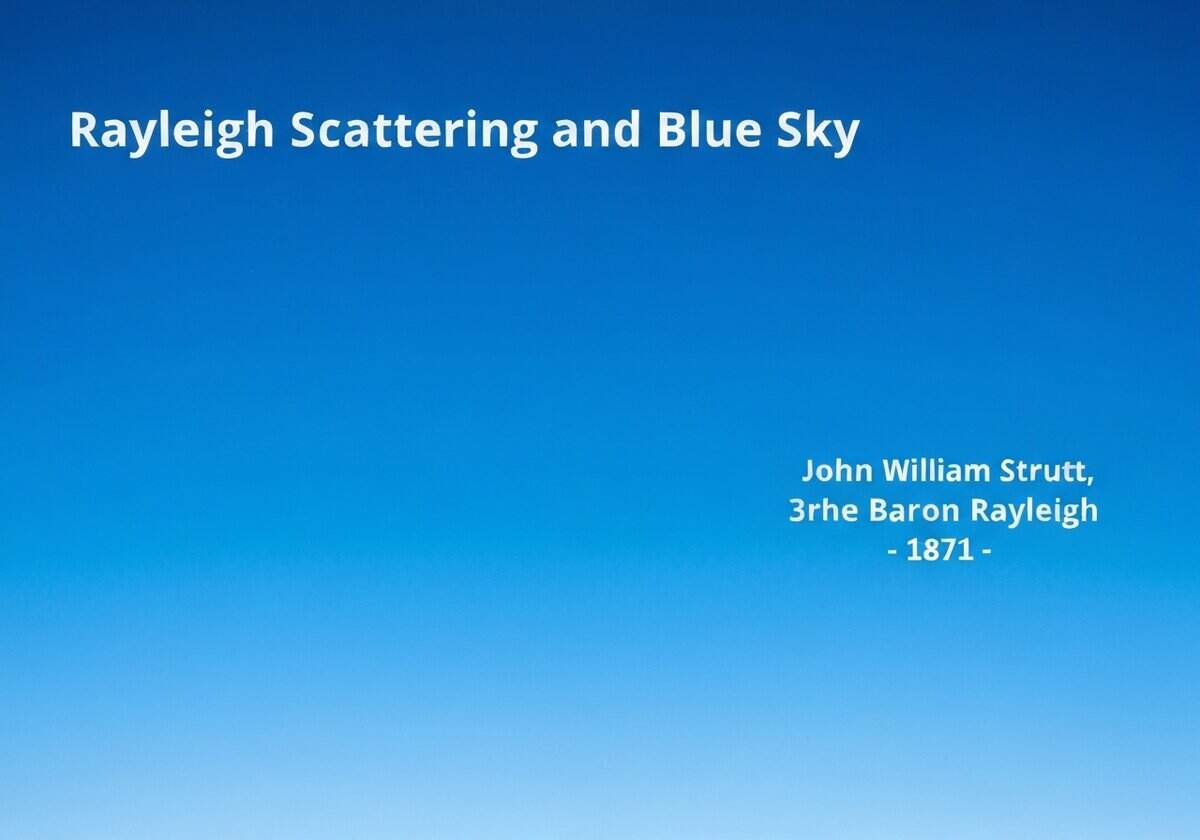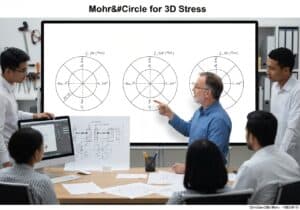Rayleigh scattering is the elastic scattering of light by particles much smaller than the light’s wavelength. This phenomenon is responsible for the blue color of the daytime sky. Shorter, blue wavelengths of sunlight are scattered more effectively by the nitrogen and oxygen molecules in the atmosphere than longer, red wavelengths, causing the sky to appear blue from an observer’s perspective.
Rayleigh Scattering and Blue Sky
- John William Strutt, 3rd Baron Rayleigh

The intensity of Rayleigh scattering is strongly dependent on the wavelength of the light, following an inverse fourth-power law: \(I \\propto \\lambda^{-4}\). This means that blue light (with a shorter wavelength, ~475 nm) is scattered about 16 times more intensely than red light (~700 nm) by the gas molecules in the atmosphere. When we look at the sky away from the direct sun, our eyes perceive this scattered blue light coming from all directions. Conversely, when the sun is near the horizon at sunrise or sunset, its light must travel through a much longer path in the atmosphere to reach the observer. By the time it does, most of the blue and green light has been scattered away from the direct line of sight, leaving the longer-wavelength oranges and reds to be seen. This same principle explains why distant clouds or mountains can appear bluish. Rayleigh scattering is distinct from Mie scattering, which is caused by particles of a size comparable to or larger than the wavelength of light (like water droplets in clouds) and is not strongly wavelength-dependent, which is why clouds appear white.
Type
Disruption
Usage
Precursors
- John Tyndall’s experiments on light scattering by aerosols (the Tyndall effect)
- james clerk maxwell’s theory of electromagnetism
- augustin-jean fresnel’s wave theory of light
- understanding of the composition of earth’s atmosphere
Applications
- spectrophotometry
- fiber optic communications (as a source of loss)
- remote sensing and lidar
- computer graphics for realistic atmospheric rendering
- nephelometry (measuring particle concentration in liquids/gases)
- explanation of sunset and sunrise colors
Patents:
Potential Innovations Ideas
Professionals (100% free) Membership Required
You must be a Professionals (100% free) member to access this content.
AVAILABLE FOR NEW CHALLENGES
Mechanical Engineer, Project, Process Engineering or R&D Manager
Available for a new challenge on short notice.
Contact me on LinkedIn
Plastic metal electronics integration, Design-to-cost, GMP, Ergonomics, Medium to high-volume devices & consumables, Lean Manufacturing, Regulated industries, CE & FDA, CAD, Solidworks, Lean Sigma Black Belt, medical ISO 13485
We are looking for a new sponsor
Your company or institution is into technique, science or research ?
> send us a message <
Receive all new articles
Free, no spam, email not distributed nor resold
or you can get your full membership -for free- to access all restricted content >here<
Related Invention, Innovation & Technical Principles














